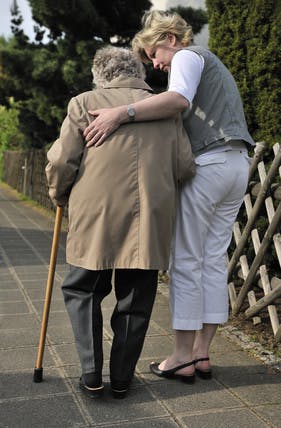The Pew Internet Project’s released their latest study on the social life of health information. The full report marks the growth in use of online searches, mobile tools, and social networks for health information.
I want to focus on one thing that leaped out at me while reading it, and that’s the growing use of social network sites by caregivers.
Pew found that caregivers use social network sites for updates and gathering information support more than other online social network participants.
28% of caregivers who use social network sites say they follow friends’ health updates, compared with 21% of other social network site users. Twenty percent of caregivers who use social network sites say they have gathered health information on such a site, compared with 12% of other users.”
How a support group can help
Pew also pointed out these same sites “can be a source of encouragement and care.” That jibes with this terrific article about the nurturing, understanding, and path-setting caregivers get from their support group.
Our collective experience is a priceless resource. At a basic level, we exchange advice for keeping our partners from wandering off and techniques for bathing, calming and medicating them. We discuss ways to handle their hallucinations and incontinence, the mere mention of which often spooks outsiders. We share advice on what to tell the police, and what not to tell them, to keep them from hauling our sometimes violent mates to a psychiatric ward.
But our group’s deepest value lies beyond such practical matters. We speak of feelings and problems too sensitive or fraught to discuss outside. We recount the disappearance of old friends, whose discomfort around our spouses keeps them away. We mourn the loss of companionship and sex.
We guiltily admit to bouts of irrepressible anger in face of the intransigence and aggression typical of dementia. We speak about our children and stepchildren — some attentive and devoted, some interfering or remote.
And knowing that dementia is a terminal disease, together we contemplate death — our spouses’ and our own. When should we refuse treatments or call in hospice? What will become of our loved ones if we die first? How will we manage our own final years as we rapidly exhaust our resources? These are deeply personal, in some ways political questions that science cannot answer.”
This type of interaction and community is something the health care system can’t or doesn’t provide. in the employer setting, it’s a part of what affinity groups offer. These groups have long been present to give succor and a voice to minorities related to gender, race, and sexual orientation.
Over time, people concerned about disabilities, generational needs and other discrete groups have also formed affinity groups. Mercer’s recent report on the resurrection of affinity groups identifies groups for working parents, military service personnel, adoptive parents and adult caregivers.
Employees as caregivers, the next major affinity group
Right now, one in five full-time employees is an adult caregiver and experiencing serious ramifications:
- 17 percent say their health has gotten worse as a result of care giving (this intensifies with the length of care giving and based on income and race);
- Three in 10 find their care giving situation emotionally stressful;
- 53 percent are taken away from friends and family because of their care giving responsibilities — an added layer of emotional stress;
- 34 percent would like more information about how to manage their emotional stress;
- 32 percent would like more information about how to find time for themselves.
As our population ages, the number of employees acting as caregivers will only grow, and so will their need for support. Flexibility will be key, as caregivers routinely report needing to come in late, leave early or request some shift in typical work schedules.
But emotional support and advice from people who’ve “been there” will also be critical. Today only 11 percent of those employers who participated in the mercer study focus on elder care. Contrast that with the prevalence of affinity groups for women (93 percent), race/ethnicity (90 percent), and sexual orientation (84 percent).
I asked Cali Yost her thoughts on the need for more attention to adult caregivers and she responded:
I’m not surprised by the finding that only 11 percent of employers are focused on elder care. The growth of online networks and affinity groups fills the void between what more and more people are experiencing and the lack of support from employers and the community. At some point, the tidal wave of elder care is going to slam into Corporate America and resources and flexibility will be devoted to the issue. But until then, it’s good to see organic communities of shared experience and need stepping to the plate.”
Many companies already provide elder care resources and guidance through their employee assistance programs or other similar providers. Creating an affinity group — a caregivers community — is a logical extension.
I’ll put money on our seeing a rise in the number of adult caregiver affinity groups. What Pew’s study shows us is that underpinning these affinity groups with an online social network that bends time, geography and level will deliver the much-needed emotional ballast caregivers seek.
This was originally published on Fran Melmed’s Free-Range Communication blog.
